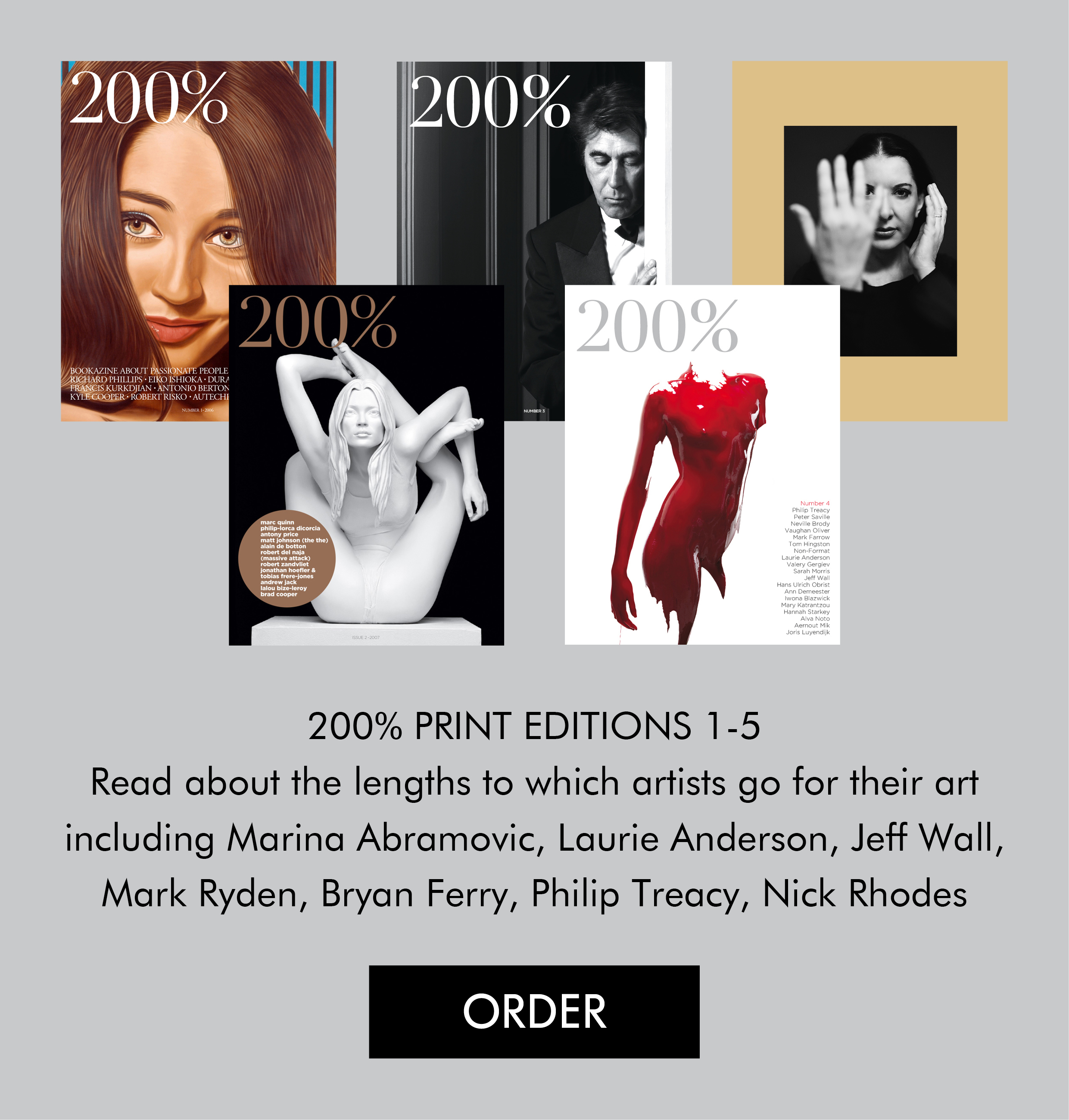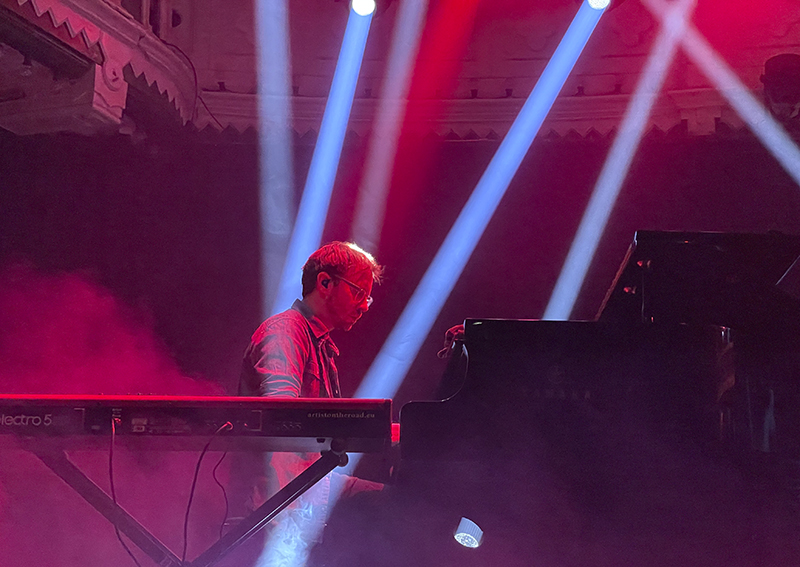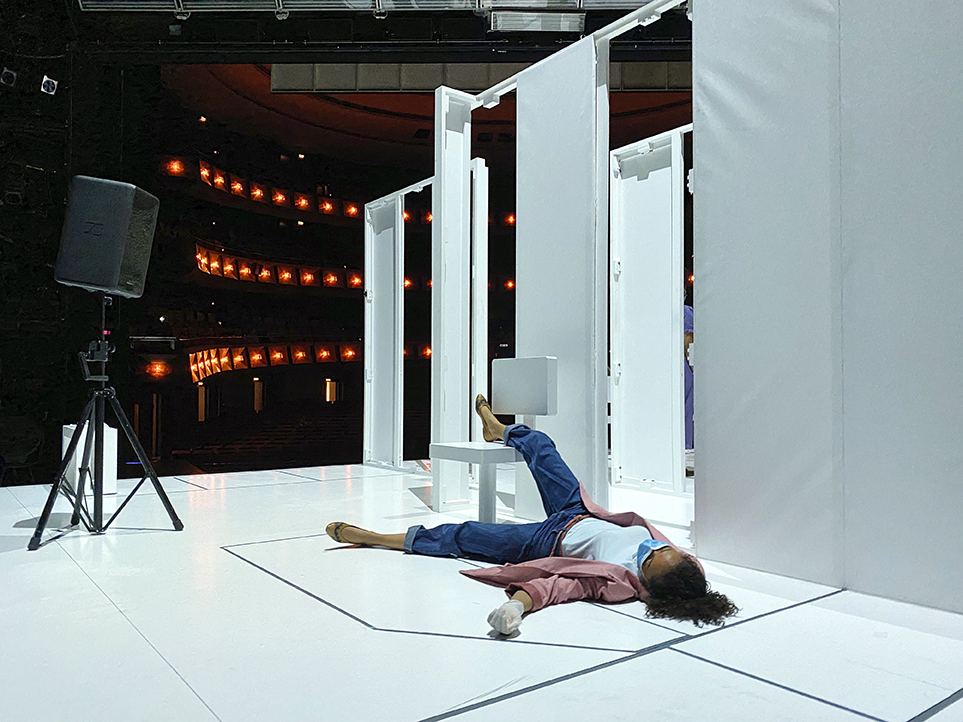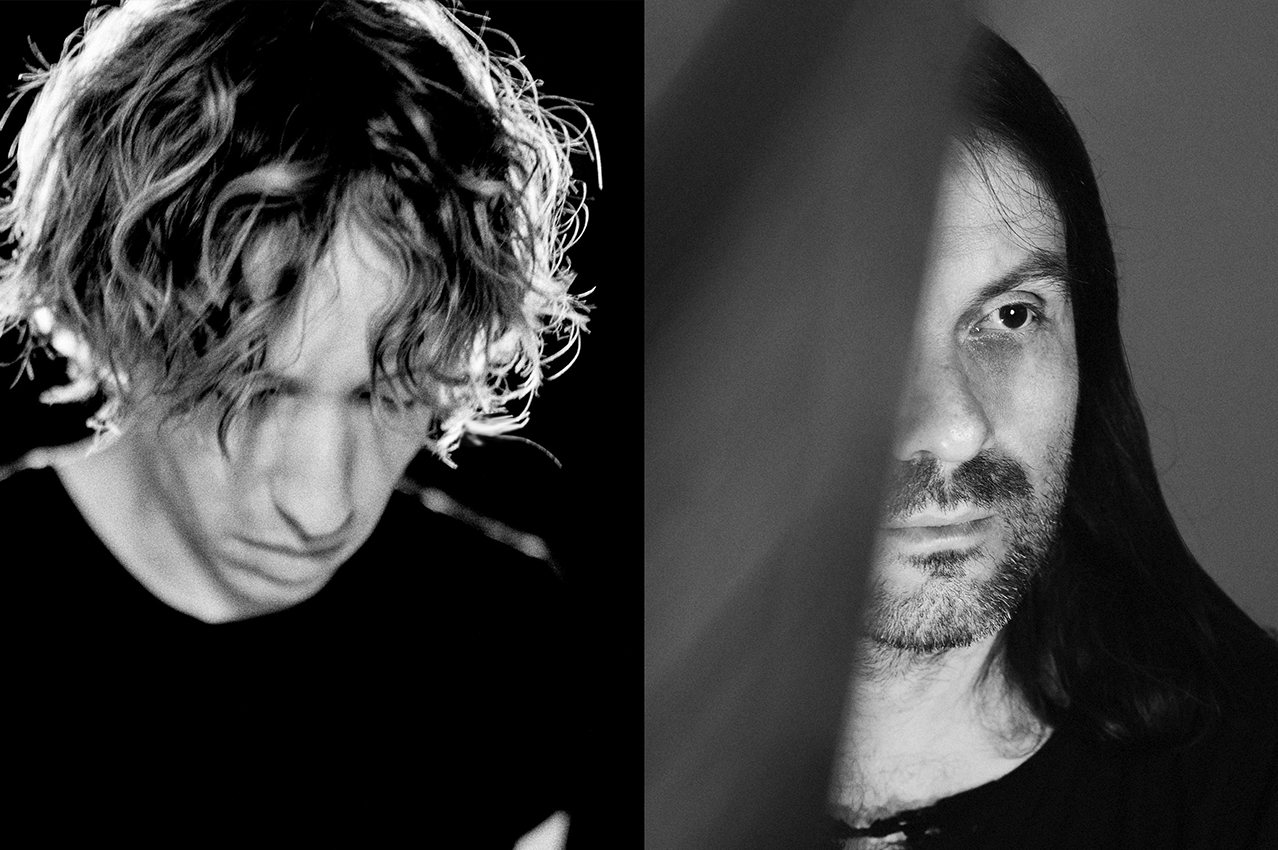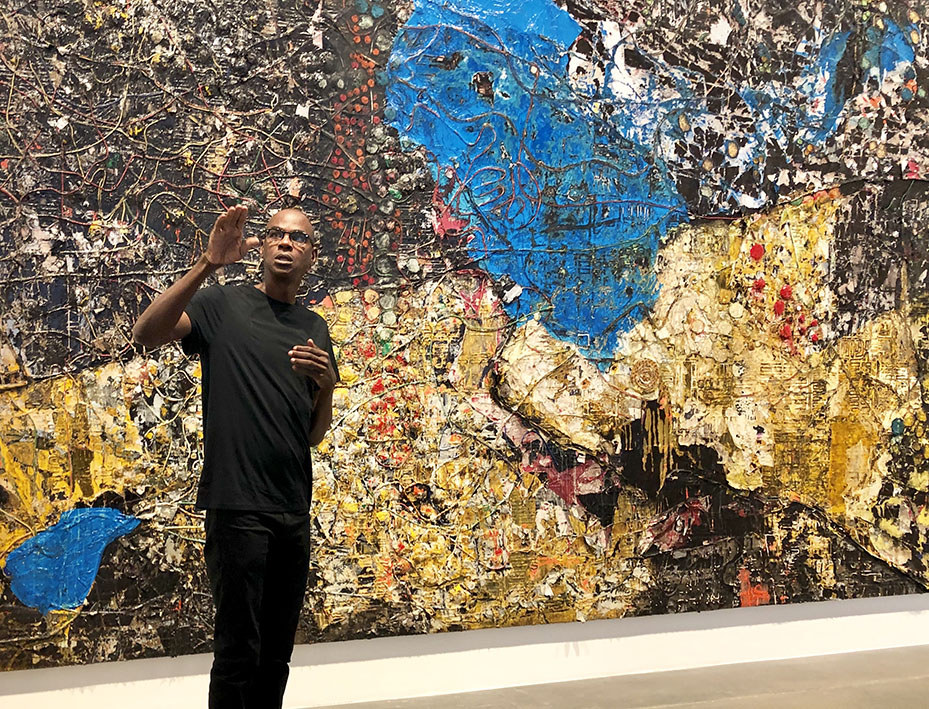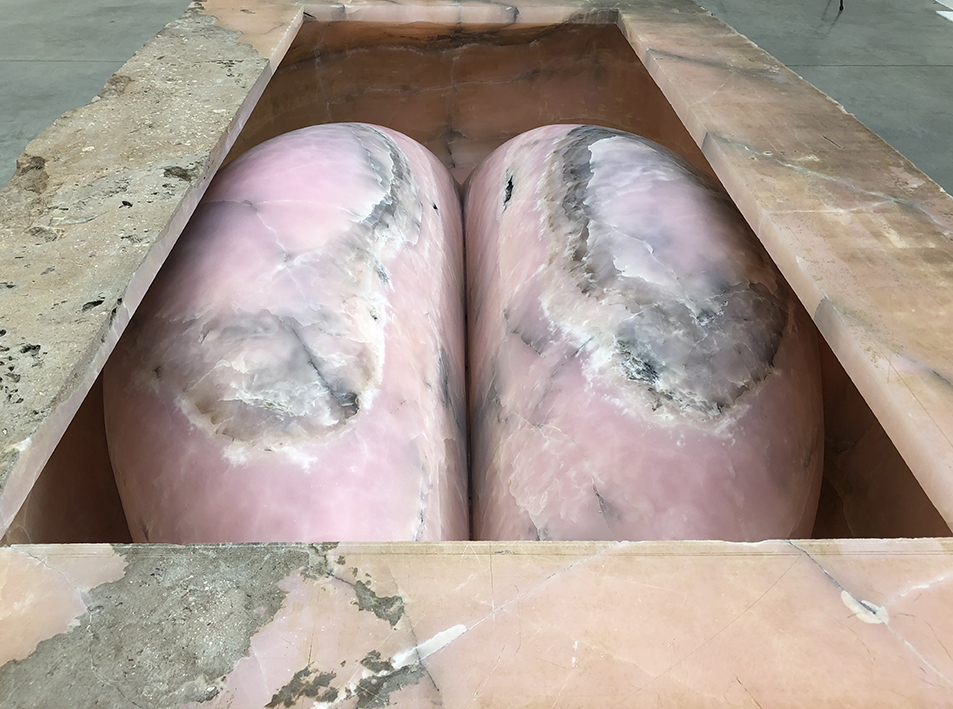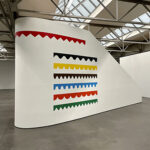 For the inaugural exhibition of David Zwirner’s new London space, the gallery presented new paintings by the Belgian artist Luc Tuymans. Six out of the ten paintings in this show, entitled ‘Allo’, are based on the final scene in the movie version of W. Somerset Maugham’s novel ‘The Moon and Sixpence’ (1942). The film, which is loosely based upon the life of the artist Paul Gauguin, depicts a stockbroker, Charles Strickland, leaving his job and family to become an artist and settle in Tahiti.
For the inaugural exhibition of David Zwirner’s new London space, the gallery presented new paintings by the Belgian artist Luc Tuymans. Six out of the ten paintings in this show, entitled ‘Allo’, are based on the final scene in the movie version of W. Somerset Maugham’s novel ‘The Moon and Sixpence’ (1942). The film, which is loosely based upon the life of the artist Paul Gauguin, depicts a stockbroker, Charles Strickland, leaving his job and family to become an artist and settle in Tahiti.
After Strickland’s death (from leprosy), his doctor discovered numerous fake-Gaugain paintings of colourful landscapes, exotic naked women and tribal sculptures the artist left behind in his hut.
Tuymans bases his paintings from pre-existing imagery including photographs and video-stills. With his iPhone, Tuymans photographed stills from the ‘The Moon and Sixpence’, from which he then produced the six works. One of the pieces exudes a mysterious atmosphere where the Belgian artist depicts the doctor standing in the darkened interior with the partially illuminated artworks. Other pieces are close ups of naked women and tribal sculptures.
These paintings are a break from Tuymans previous style. Not in the sense that his abiding concerns of colonialism return in these works, but that he has never undertaken a series of paintings. Also, there is a different approach to colour for an artist renowned for his monochromatic, sparsely coloured paintings. The colours in ‘Allo’ are bold and bright, which is related to the fact that the final scenes of the black and white film were rendered in Technicolor creating saturated levels of colour. The works are also high in contrast and Tuymans explored his interest in projected light. There is a lot to relish in these works in how Tuymans painted the different sources of light and how he handles a rich colour palette. Still, they remain indisputable works of the artist who is credited with having contributed to the revival of painting in the 1990s.
In this interview Tuymans discusses his different approach to colour, his fascination with projected light and ‘HM’ his portrait of Her Majesty Queen Beatrix that caused quite a controversy when it was revealed at the re-opening of the Stedelijk Museum in Amsterdam.
200%: In the past you made paintings based on Polaroids, from which you like to work, as Polaroids are tied to an extreme randomness where you never know exactly how the image is going to develop. There is an inherent element of loss and possible failure that you value. For this body of work you photographed stills from the film on your iPhone. Making pictures with the iPhone you have an accurate reproduction of an image, but you don’t have the ‘qualities’ that you value with Polaroids. Could you explain how the iPhone pictures have influenced the creative process of the ‘Allo’ paintings?
Luc Tuymans: Well, the iPhone is also quite inaccurate, quite limited, in a sense it is a little bit similar to the Polaroid. Actually you can make Polaroids with your iPhone – there is an app for it. That is not the point, though, the point is that I needed to have an accurate image of the image, which is the image from a computer screen and you may or may not have seen there is also an overlay in the image itself that is painted as that is part of my reflection, myself actually in the screen.
200%: Yes, I noticed a dark shadowy outline – that of yourself, as your reflection was visible in the photographs you took of the stills. Why did you include your reflection in the final painting?
LT: To double off the image, to make it even more layered. The paintings are dealing with ideas about the exotic, the colonial and, of course, the representation of an artist. This film was one of the very first representations of an artist as being a sort of ego-maniac, immoral and in the end absolved discourse. It is a joke on Modernism.
 200%: What is your explanation as to why Hollywood has a longstanding idealization of the artist as a romantic savage?
200%: What is your explanation as to why Hollywood has a longstanding idealization of the artist as a romantic savage?
LT: That is the case with Hollywood itself. It’s a perception that has been quite enduring in a sense that it became a cliché and clichés are the hardest things to break down. People, to this very day, consider artists as moderate nutcases, but it has changed, as nowadays that they earn a lot of money and the public is amused or intrigued by this, but they still don’t really understand that being an artist is a professional, serious job, 24/7.
200%: With this show there is a different approach to colour when compared to your other works.
LT: Yes, indeed: there is rich colour, it is more bold and there is also a higher contrast within the image. Normally, I work from the lightest colour and then go into the contrasts. With the ‘Allo’ paintings I had to do the reverse in order to find the right strength of the colour.
200%: Can you say something about the sources of light in the paintings as they are quite varied, ranging from reflected, internal, external and projected.
LT: The light is about projected light which has fascinated me throughout time in filmed imagery – the projected image on the wall or on a screen. To me, it is additional light that is artificial and that type of artificial light was something I always wanted to depict in a painting.
 200%: The viewpoint from which you portrayed Queen Beatrix seems to be slightly above her, which is unusual as, with the typical official portraits, leaders and royals are portrayed from underneath so the public looks up to them. Can you explain why you chose this viewpoint for an official portrait?
200%: The viewpoint from which you portrayed Queen Beatrix seems to be slightly above her, which is unusual as, with the typical official portraits, leaders and royals are portrayed from underneath so the public looks up to them. Can you explain why you chose this viewpoint for an official portrait?
LT: I wanted to portray Queen Beatrix as somebody who is human, with a certain dignity. It had to be a picture of me, I mean a picture that I made, not just a picture of the Queen of Holland. This picture was an assignment which is a huge exception as I never do that, but I like her as a person. I was interested to depict her as a person so I wanted to do it on a human scale. Thus the point of view.
200%: In addition, to me, your official portrait of Queen Beatrix is that of an elderly, vulnerable, isolated woman, whose face depicts worries, rather than a typical official portrait portraying a glorious, strong leader. Is this how you perceive her?
LT: I try to depict her as I perceived her. Of course there is an element that I never embellish and clearly this woman has a certain age, uses too much mascara and eye shadow but I hope the picture is not a joke. It is a human person who faces tragedies in her own personal life, for instance, the ski accident of one of her sons [Prince Friso]. There might be a slight element of being tired in the final painting.
200%: Did Queen Beatrix sit for you?
LT: No, I went there and we first selected the space which was the Oranjezaal, a space full of historical paintings by painters out of the southern part of The Netherlands. I just went there with an iPhone and made some pictures of her and painted the portrait in my studio.
200%: When you paint a portrait do you read about the person in advance of the sittings?
LT: I know Queen Beatrix quite well as I have been many times a member of the jury Dutch Royal Prize for Painting and we always have lunch with the Queen. The [idea of a] portrait of her was proposed to me by the board of trustees of the Stedelijk Museum.
200%: You have put all these encounters with Queen Beatrix in the portrait?
LT: Yes, indirectly.
200%: What was Queen Beatrix’s comment on your portrait of her?
LC: Very good, in the sense that she came with the same dress as the one she wears in the portrait. She also commented to me that there was a lot of controversy about how she was depicted in the painting, but she told me “that is as it should be”.
Interview written and conducted by Thierry Somers. Paintings: Luc Tuymans, Allo! I, 2012, Oil on canvas, 52 5/8 x 71 7/8 inches (133.7 x 182.6 cm), Courtesy David Zwirner, New York/London; Allo! V, 2012, Oil on canvas, 50 1/8 x 72 3/4 inches (127.3 x 184.8 cm), Courtesy David Zwirner, New York/London; Luc Tuymans, H.M., 2012, 210,4 x 144,9 cm, Oil on canvas, Collection Stedelijk Museum Amsterdam.
Luc Tuymans, Allo!, David Zwirner London, until 17 November 2012, 24 Grafton Street, W1S 4EZ. The Summer Is Over, David Zwirner New York, 1 November – 19 December 2012, 519 West 19th Street. www.davidzwirner.com

